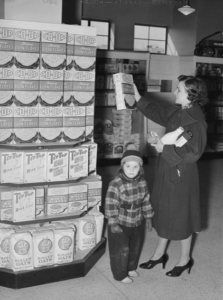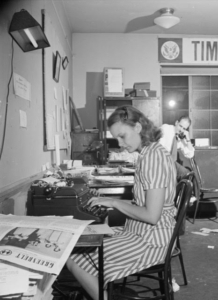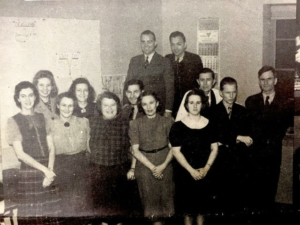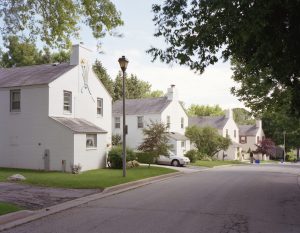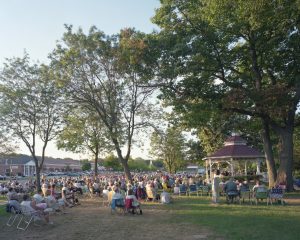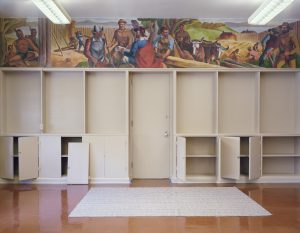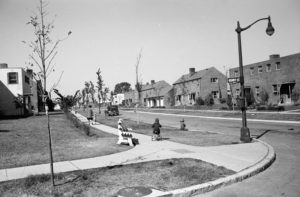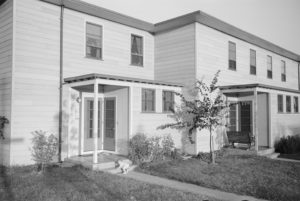
Music for square dance at Skyline Farms, Alabama, 1937
Photo by Ben Shahn, Resettlement Administration. Courtesy, Library of Congress.
The Resettlement Administration (RA) was a sprawling New Deal agency created in 1935 to oversee a disparate set of government initiatives, most of which focused on providing help in rural areas. This included an experimental program to build new homestead communities for “displaced populations”—farmers whose land had failed, miners whose mines had shut down and unemployed urban workers willing to try rural life. Almost completely lost to history is the agency’s Music Unit, hidden within the RA’s vaguely named Special Skills Division, which left a trove of recordings documenting the folk music of Depression-era America.

Charles Seeger was a technical advisor to the Music Unit of the Special Skills Division of the Resettlement Administration (later renamed the Farm Security Administration). He also served as an administrator for the WPA’s Federal Music Project. His children, Pete, Peggy and Mike were renowned American folk singers.
Courtesy, Wikipedia.
The RA’s Music Unit dispatched federal workers as field representatives to lead music activities and record folk songs that were then incorporated into music programs meant to help strengthen ties among the homesteaders. This “social use” of music was intertwined with a larger (and controversial) goal of the RA to foster an ideological shift on the homesteads away from rugged individualism to an emphasis on collective responsibility.
It now seems clear that the lost history of the Music Unit is no accident—the Special Skills Division wanted to keep the Music Unit’s activities below the radar, likely to avoid attention from the RA’s many critics. Any music program within the agency would have been seen as frivolous; one invested in instilling a cooperative mindset among the rural poor could seem downright dangerous.
Between 1936 and 1937, Music Unit staffer Sidney Robertson became the RA’s most prolific folk music collector, recording more than 800 songs on solo collecting

First lady Eleanor Roosevelt attended the White Top Folk Festival in Grayson County, Virginia, 1933
Courtesy: https://www.archives-wcpl.net
trips through the Appalachians, the Ozarks and Upper Midwest. Sidney was fascinated by labor union protest music and made recordings of left-wing activists in St. Louis and striking millworkers in Tennessee.
She discovered new musical worlds in the immigrant enclaves of Norwegian, Finnish, Swedish, Polish and Lithuanian in the Midwest and was the first collector to record folk songs of ethnic immigrants and call them “American.” All of this informed her later work directing the WPA’s California Folk Music Project (1938–1940).

Dancers taught by Leonard Kirk, Cumberland Homesteads, Crossville, Tennessee, 1937
Photo: Ben Shahn, Resettlement Administration. Courtesy, Library of Congress Prints and Photographs Division.
The RA was one of the New Deal’s most radical, far-reaching and highly criticized programs. It lasted just two years, from 1935 to 1937, when it became the Farm Security Administration (FSA). At that time, the overall focus of the New Deal had shifted away from the kind of direct relief that the RA had provided and towards the job programs of the Works Progress Administration. But the rich collection of recordings made for the RA, now archived at the American Folklife Center of the Library of Congress, function as sonic equivalents to the FSA’s famous photographs documenting the hardscrabble 1930s—sounds of resilience, joy, protest, pain and humor among Americans struggling through the Great Depression.
WATCH the Living New Deal webinar, “Folk Music and the New Deal: Collecting the Hidden Soundtracks of the Great Depression,” featuring Sheryl Koskowitz and Catherine Kerst.



